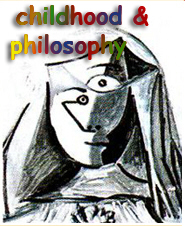from confusion to love: russell hoban’s the mouse and his child as phenomenological novel
Keywords:
Child Perception, Intercorporeality, Merleau-Ponty, Child-adult RelationsAbstract
Russell Hoban’s famous children’s novel, The Mouse and His Child, centers around a child’s quest for family, community, and self-awareness. This paper works to describe the novel as philosophical insofar as the novel takes up themes and elements of Maurice Merleau-Ponty’s essay “The Child’s Relations with Others.” Because the mouse and his father are joined at the hands, because they find their motion to be a problem, and because they work through ambiguity toward a loving community, the novel puts particular emphasis on what Merleau-Ponty calls intercorporeality and the way a child’s perception of ambiguity can lead to a non-pathological engagement with others in a loving, thoughtful way. Ultimately, this paper argues that the novel ought to be read and taught to children because it represents to them the emotion, language, and desire of a child as being a catalyst even for adult growth.Downloads
Download data is not yet available.
Downloads
Published
2015-06-18
How to Cite
COSTELLO, Peter raymond. from confusion to love: russell hoban’s the mouse and his child as phenomenological novel. childhood & philosophy, Rio de Janeiro, v. 11, n. 21, p. 93–103, 2015. Disponível em: https://www.e-publicacoes.uerj.br/childhood/article/view/20718. Acesso em: 2 oct. 2025.
Issue
Section
special issue




